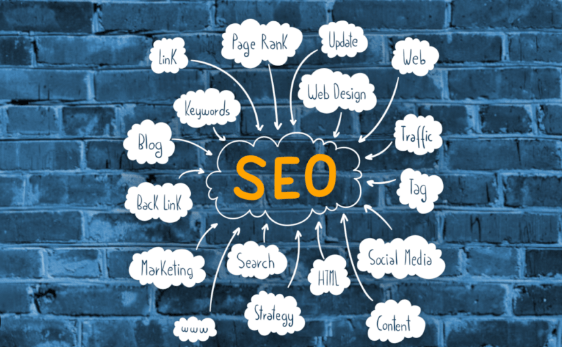SEO Demystified: How to Optimize Your Website for Maximum Visibility

1. Introduction
Search engine optimization, commonly known as SEO, is a fundamental element of modern digital marketing. In an era where online presence can make or break a business, understanding how search engines rank web pages is crucial to securing high visibility. This article explores what SEO is, why it matters, and how to utilize it effectively to ensure your brand stands out in a crowded online landscape.
2. Understanding SEO
At its core, SEO involves optimizing a website’s content, structure, and authority so it can rank prominently on search engine results pages (SERPs). This process includes both on-page and off-page strategies, each contributing to how search algorithms interpret and value your site. On-page tactics revolve around optimizing individual pages for target keywords, creating user-friendly layouts, and crafting compelling meta descriptions. Off-page tactics often involve acquiring quality backlinks from reputable domains and building social signals that indicate trust and relevance. While algorithms update frequently, the fundamental aim of SEO remains consistent: to enhance online visibility by satisfying user intent.
See also: Understanding Fintech: Industry Overview, Key Participants, Market Perspectives, and Products
3. Why SEO Matters
Today’s consumers rely heavily on search engines to discover new products, services, and information. Ranking prominently in search results can drive substantial traffic to your site without the recurring costs of paid advertising. Moreover, users often trust organic results more than sponsored listings, associating higher positions on the SERPs with credibility and authority. For businesses of all sizes, implementing a robust SEO strategy can lead to sustainable growth, brand recognition, and heightened customer engagement. By aligning your content with what audiences are actively searching for, you create a direct pathway for potential clients to find and interact with your offerings.
4. On-Page SEO
On-page SEO focuses on optimizing the content and structure of individual web pages to make them more appealing to both search engines and users. This includes incorporating relevant keywords in titles, subheadings, and body text in a natural, reader-friendly manner. Quality content is paramount; search engines use various signals to gauge whether your page provides genuine value. Meta tags such as title tags and meta descriptions play a role in signaling content relevance. Additionally, using descriptive URLs and optimizing images with appropriate alt text further helps search engines identify the context and purpose of each webpage. Effective interlinking is important.
5. Off-Page SEO
Off-page SEO centers on actions taken outside your website to improve its authority and credibility. Chief among these tactics is link building, which involves acquiring high-quality backlinks from reputable sources. These backlinks signal to search engines that other websites vouch for your content. Social media engagement also indirectly supports off-page SEO by driving user awareness and fostering brand mentions. Moreover, online reviews and listings in relevant directories can bolster your site’s reputation. The goal is to cultivate a positive digital footprint, ensuring that search engines perceive your brand as both trustworthy and valuable to online users. Influencer outreach helps too.
6. Technical SEO
Technical SEO aims to optimize the infrastructure of your website, ensuring that search engines can crawl, index, and interpret pages efficiently. Key factors include site speed, mobile responsiveness, and a secure HTTPS protocol. Slow-loading sites and unresponsive layouts can frustrate users and lead to higher bounce rates, negatively affecting rankings. Employing structured data and clean coding practices can also help search engines contextualize your content, potentially leading to rich results. Additionally, XML sitemaps and robots.txt files guide search engine bots to the most relevant pages on your site. A strong technical foundation supports all other aspects of your SEO efforts.
7. Measuring SEO Success
Analyzing the performance of your SEO initiatives is essential for continuous improvement. Metrics such as organic traffic, keyword rankings, and bounce rates reveal how well your strategies are working. Google Analytics and Google Search Console provide data on which pages attract the most visitors and how users interact with your site. Conversion tracking measures the effectiveness of your SEO in driving tangible results, like sales or sign-ups. Additionally, monitoring your backlink profile helps identify opportunities for link-building and shows whether your domain authority is rising. Regular auditing ensures you remain adaptable to evolving algorithm changes. Monitoring user engagement also matters.
8. Future Trends in SEO
SEO continues to evolve as user behavior and search engine algorithms grow more sophisticated. Voice search is on the rise, emphasizing the need for conversational keywords and structured data. Artificial intelligence and machine learning help search engines better understand user intent, meaning high-quality, context-driven content is more important than ever. Visual search technologies, such as Google Lens, offer new opportunities for optimization. Meanwhile, advances in mobile technology highlight the significance of speedy, user-friendly experiences. Staying informed about these trends and adapting your strategies accordingly ensures that your website remains competitive in an ever-changing digital environment. Local targeting is growing rapidly.
9. Conclusion
Investing in SEO is a long-term strategy that can transform your online presence. By continually refining your approach, you build authority and trust. For specialized guidance, visit SEO to unlock your website’s full potential and growth.



